The Roman Empire may have fallen, but its greatest masterpieces refuse to disappear. From towering aqueducts to crumbling amphitheaters, the echoes of ancient Rome still stand, daring time itself to erase them.
Walk the same roads where emperors once paraded, where gladiators clashed, and where history was written in stone. Some ruins remain remarkably intact, while others wear their scars with pride—each one a reminder of a civilization that shaped the world.
These aren’t just old rocks. They’re portals to an era of power, ambition, and larger-than-life legends.
Whether it’s the grandeur of the Colosseum or the eerie silence of a forgotten temple, every site tells a story worth hearing. Ready to chase the ghosts of Rome?
These 27 remnants will take you back nearly 2,000 years—no time machine required.
The Colosseum, Rome
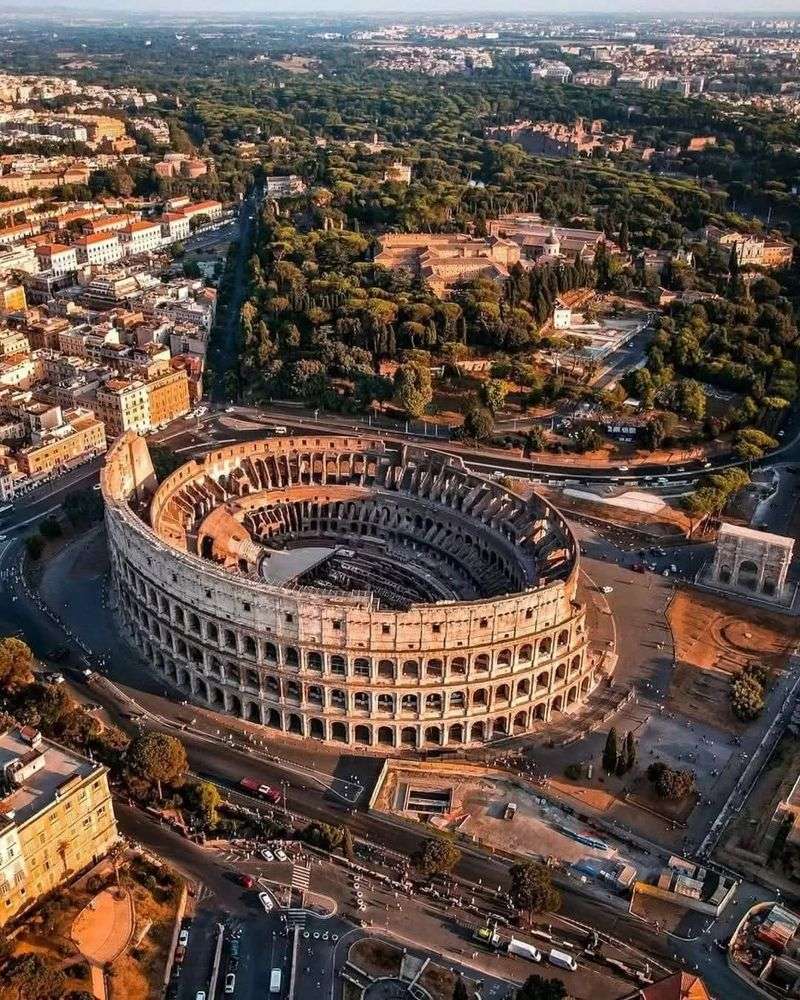
This iconic amphitheater once hosted gladiator games witnessed by tens of thousands. Today, its ancient arches and corridors invite visitors to imagine the thrilling spectacles once held here.
With its grandeur still intact, the Colosseum remains a symbol of Rome’s architectural genius. Its enduring presence continues to captivate tourists and historians alike, offering insights into Roman entertainment and engineering prowess.
Walking through its corridors, one can almost hear the echoes of the past. Whether viewed from afar or explored up close, the Colosseum stands as a remarkable testament to Rome’s enduring legacy.
Pont du Gard, France

Pont du Gard in France is an ancient aqueduct showcasing Roman engineering brilliance. This towering structure, with its elegant arches, once carried water over 30 miles to the city of Nîmes.
As you walk along its length, the ingenuity of Roman hydraulics becomes apparent. The well-preserved stones whisper tales of a civilization that thrived on innovation.
Surrounded by picturesque landscapes, Pont du Gard invites reflection on the seamless blend of function and beauty. It’s a place where history and nature coexist, offering a serene escape into the past while underscoring the Romans’ architectural mastery.
Roman Forum, Rome
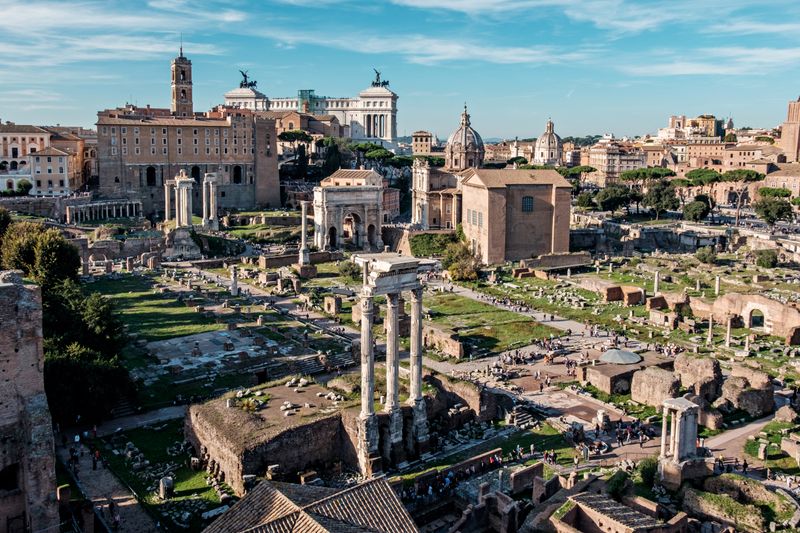
The epicenter of ancient Roman life, the Forum was a bustling hub of politics, religion, and commerce. Today, its ruins provide a glimpse into the heart of Roman society.
Walking among the remnants of temples and government buildings, one can almost sense the vibrant energy that once filled this space. Each column and stone tells stories of emperors, senators, and citizens who shaped history.
The Forum’s enduring significance lies in its ability to connect us to a world long gone, yet still present in the foundations of modern governance and societal structures.
Hadrian’s Wall, England
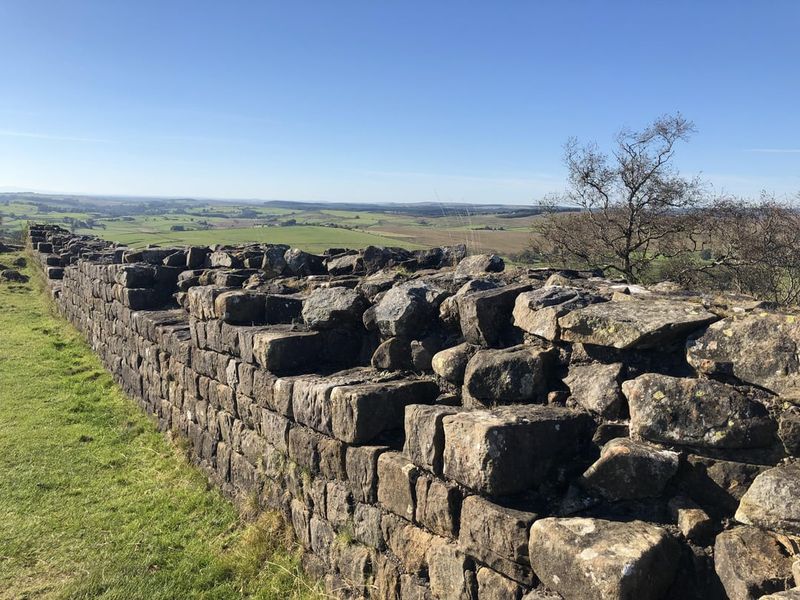
Hadrian’s Wall, a Roman frontier in Northern England, stretches across rolling hills and rugged terrain. Originally built to protect the empire’s border, it stands as a testament to Roman military strategy and engineering.
As you walk along its path, the remnants of forts and watchtowers reveal the challenges faced by Roman soldiers stationed here. The wall’s enduring presence offers insights into the complexities of Roman rule and the empire’s interactions with neighboring tribes.
It’s a place where history meets landscape, inviting exploration and contemplation of Rome’s far-reaching influence.
Baths of Caracalla, Rome

The Baths of Caracalla, once a luxurious public bathing complex, offer a window into Roman leisure culture. These expansive ruins showcase the empire’s architectural prowess, with towering arches and intricate mosaics.
Walking through the vast halls, visitors can imagine the social gatherings and relaxation that took place here. The baths were not just about hygiene; they were centers of social interaction and leisure.
Today, they stand as a reminder of the Romans’ sophisticated lifestyle and their ability to create grand communal spaces that catered to both body and mind.
Ephesus, Turkey

Ephesus, an ancient city in modern-day Turkey, was a vital Roman metropolis. Its well-preserved ruins, including the iconic Library of Celsus, offer a glimpse into the grandeur of Roman urban life.
As you wander through its streets, the remnants of temples, theaters, and homes tell stories of a bustling city that once thrived under Roman rule. The blend of Greek and Roman influences in Ephesus reflects the empire’s cultural reach and adaptability.
Visiting Ephesus is like stepping back in time, where the echoes of Roman civilization still resonate in every stone.
Diocletian’s Palace, Croatia
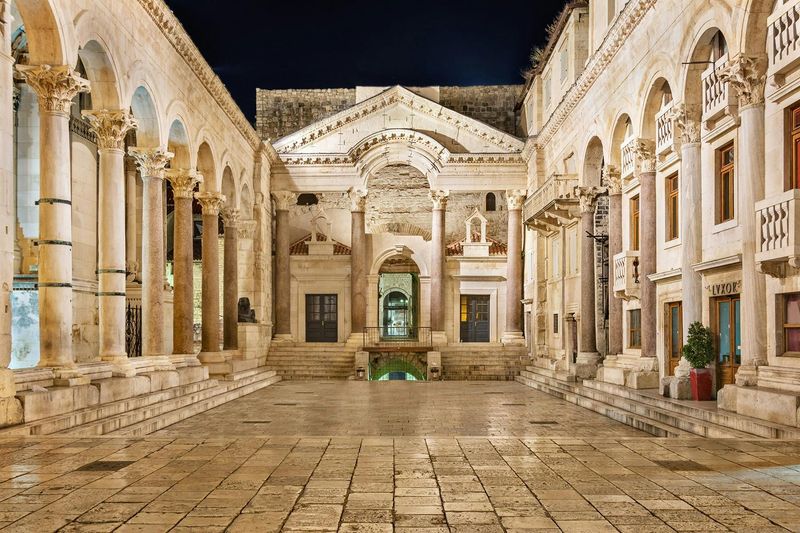
Diocletian’s Palace in Split, Croatia, is more than just ancient ruins; it’s a living part of the city. Originally built as a retirement residence for Emperor Diocletian, it’s now a bustling hub of activity.
The palace’s walls and arches tell tales of imperial grandeur, while the vibrant streets within its confines reflect the city’s modern energy. Strolling through the palace is a journey through time, where ancient history intertwines with contemporary life.
It’s a testament to the adaptability of Roman architecture and its influence on the urban landscape of Split.
Pompeii, Italy
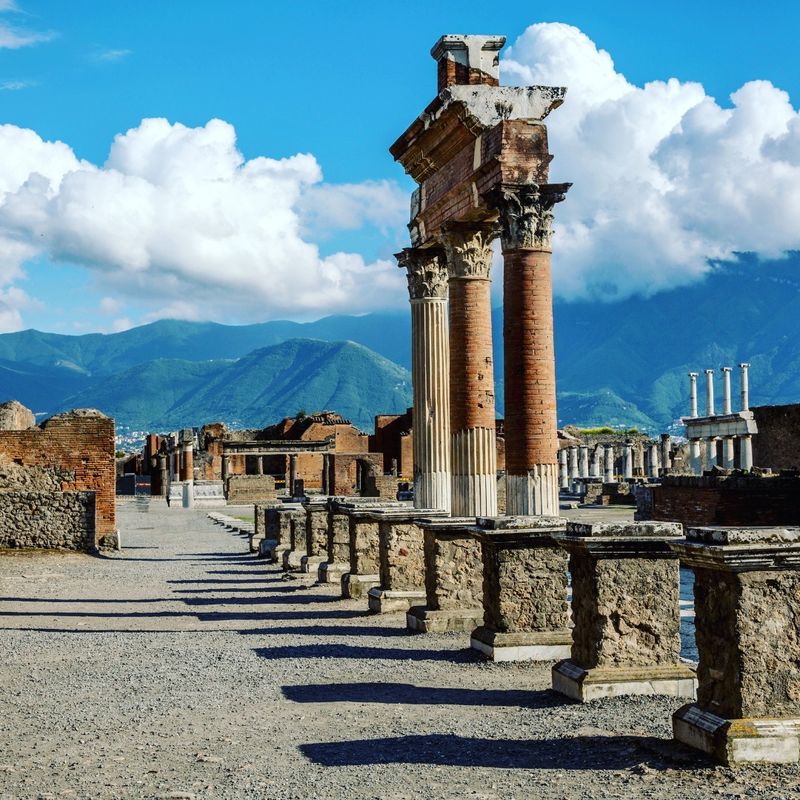
The tragic tale of Pompeii, buried under volcanic ash in 79 AD, offers a unique snapshot of Roman life frozen in time. Exploring its well-preserved ruins, visitors encounter homes, markets, and public spaces that paint a vivid picture of daily life in an ancient Roman city.
The haunting casts of victims remind us of the sudden catastrophe that befell this thriving community. Yet, Pompeii’s preservation allows for unparalleled insights into Roman architecture, art, and society.
Walking its streets is a poignant journey into the past, offering a connection to the people who once called Pompeii home.
Leptis Magna, Libya
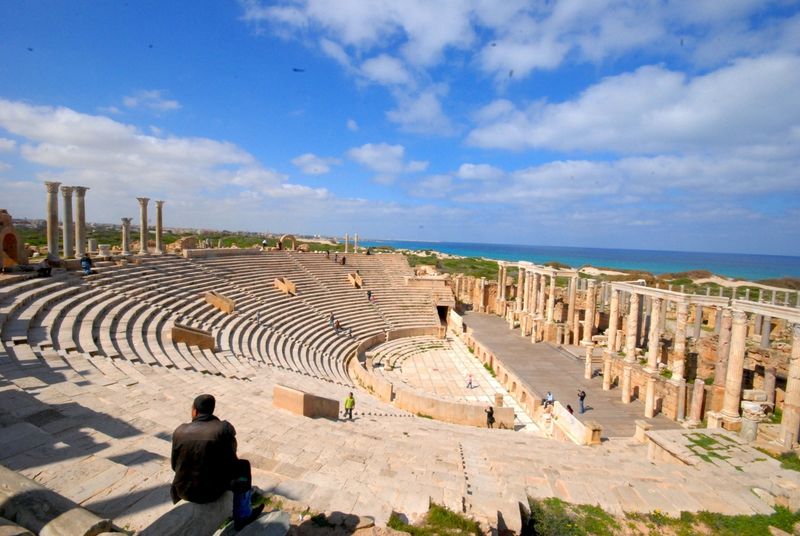
Leptis Magna, one of the best-preserved Roman cities in North Africa, reveals the empire’s reach beyond Europe. Its grand architecture, including a magnificent theater and basilica, showcases the prosperity and influence of Rome in this region.
Wandering through its streets, the scale and sophistication of Roman urban planning become evident. The city’s ruins are a testament to the blend of local and Roman cultures, reflecting a thriving metropolis that was once a vital part of the empire.
Leptis Magna stands as a symbol of Rome’s far-reaching influence and the enduring legacy of its architectural genius.
Jerash, Jordan
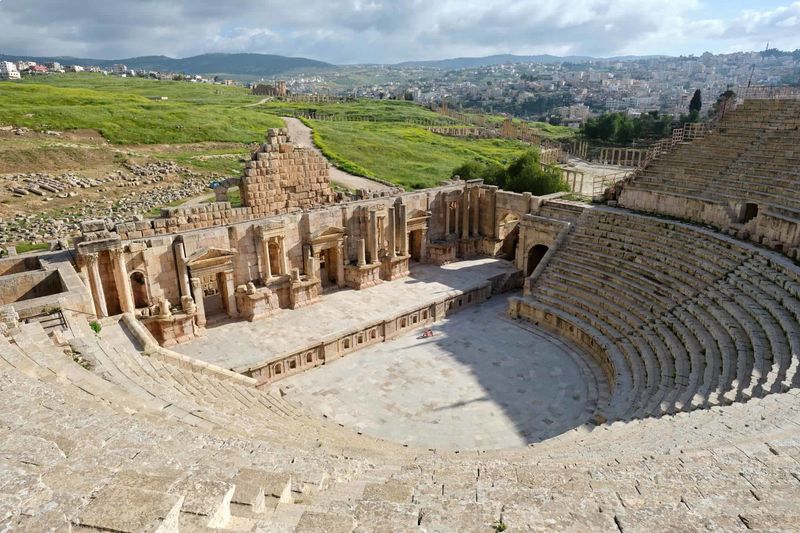
Jerash, known as Gerasa in ancient times, is one of the best-preserved Roman provincial towns in the world. Its expansive forum, colonnaded streets, and grand theaters offer a vivid glimpse into Roman life in the Middle East.
As you explore its ruins, the blend of Roman and local influences becomes apparent, reflecting a city that was both part of the empire and uniquely its own. The craftsmanship seen in Jerash’s architecture speaks to the skilled artisans who built this remarkable city.
It’s a place where the past and present converge, inviting contemplation of history’s lasting impact.
Aosta, Italy
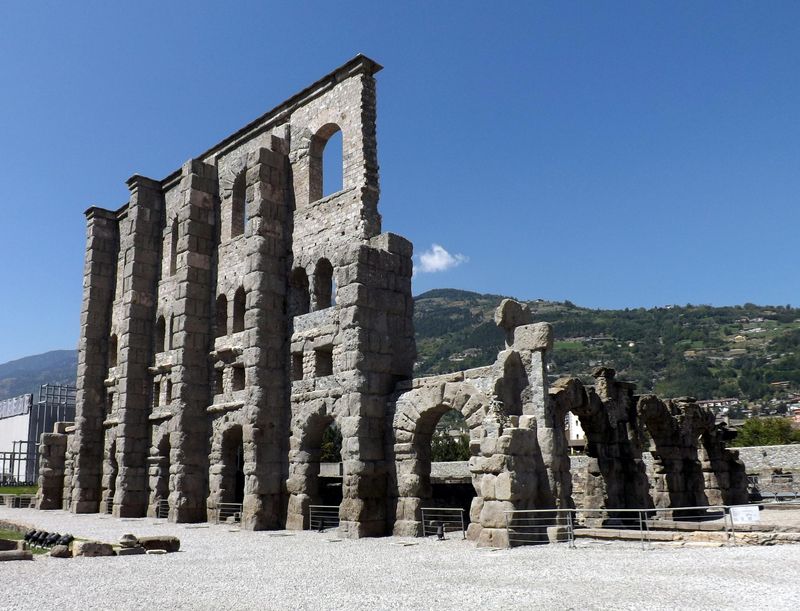
Nestled in the Italian Alps, Aosta is a hidden gem of Roman history. This ancient city, known as Augusta Praetoria, boasts impressive ruins that tell stories of a strategic Roman outpost.
The well-preserved arches, walls, and theaters reflect the city’s importance as a gateway between Italy and Gaul. Walking through Aosta, the blend of Roman and alpine influences creates a unique atmosphere.
Its strategic location highlights the empire’s military and trade ambitions. Aosta stands as a testament to the Roman ability to adapt and thrive in diverse environments, leaving a legacy still visible today.
Merida, Spain
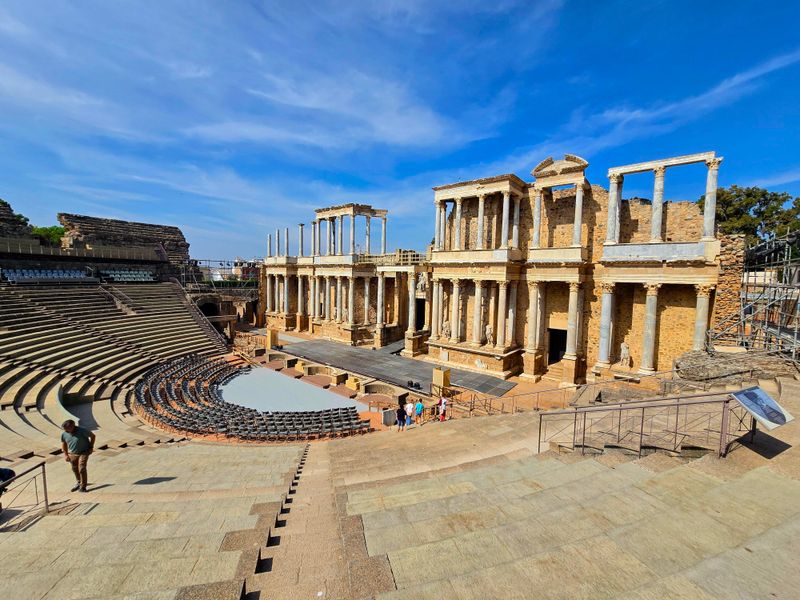
Merida, a city in Spain, is home to some of the finest Roman ruins in Europe. The ancient theater, amphitheater, and aqueduct are testaments to the empire’s architectural prowess and cultural influence.
As you explore these sites, the vibrancy of Roman life comes alive through the grand structures that once hosted performances and public gatherings. Merida’s preservation of these ruins offers a unique opportunity to experience the grandeur of ancient Rome outside Italy.
It’s a city where history is not just remembered but celebrated, allowing for a deeper understanding of Rome’s lasting impact on Europe.
Baalbek, Lebanon
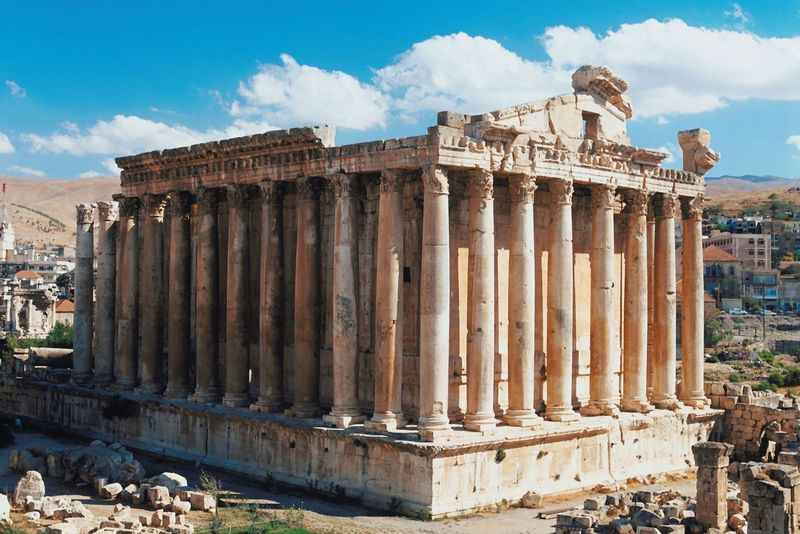
Baalbek, home to the largest Roman temple complex ever built, is a marvel of ancient engineering. Its colossal columns and intricate stonework stand as a testament to Roman ambition and craftsmanship.
As you wander through the ruins, the sheer scale of the structures inspires awe, reflecting the might and majesty of the empire. Baalbek’s temples, dedicated to various deities, highlight the blend of Roman and local religious practices.
This site offers a unique insight into the cultural and architectural exchange that defined the Roman Empire’s frontier regions. It’s a place where history’s grandeur is palpable.
Timgad, Algeria
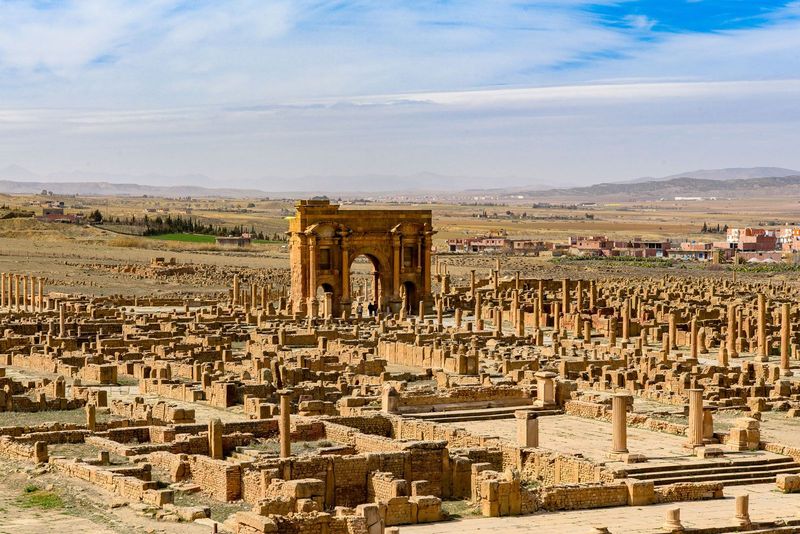
Timgad, a Roman city in Algeria, showcases the empire’s urban planning prowess. Its grid-pattern streets and well-preserved buildings reflect the meticulous organization that characterized Roman cities.
Wandering through Timgad, the remnants of temples, basilicas, and a library paint a picture of a vibrant community that thrived under Roman rule. The city’s layout is a testament to the Romans’ ability to create orderly and functional spaces that catered to both civic needs and aesthetic values.
Timgad is a remarkable example of Rome’s influence on city planning, offering insights into a world where structure and beauty coexisted.
Segovia Aqueduct, Spain
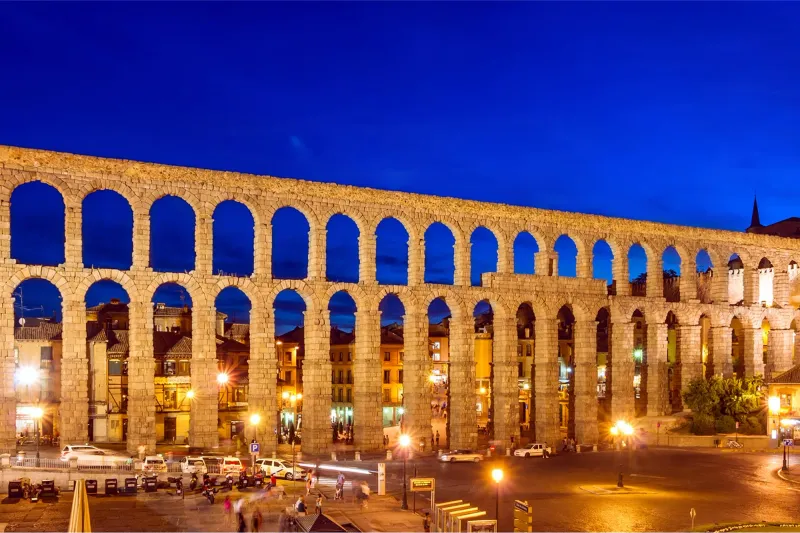
The Segovia Aqueduct is a stunning example of Roman engineering that still stands in the heart of a bustling Spanish city. Its towering arches, constructed without mortar, have withstood the test of time, carrying water for nearly two millennia.
As you stand beneath its shadow, the precision and skill of Roman builders become evident. The aqueduct’s integration into the modern cityscape highlights the enduring legacy of Roman innovation.
It’s a place where ancient history seamlessly blends with contemporary life, offering a tangible connection to the past and a reminder of the Romans’ architectural genius.
The Pantheon, Rome
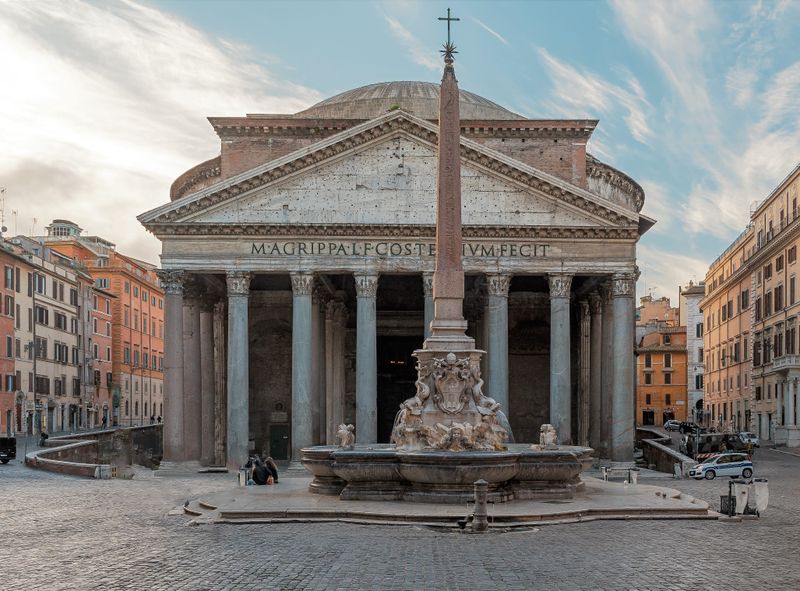
A masterpiece of ancient architecture, the Pantheon in Rome boasts the largest unreinforced concrete dome in the world. Its majestic interior, with a central opening to the sky, creates an ethereal play of light and shadow.
The Pantheon’s endurance over centuries speaks to the engineering brilliance of its Roman architects. As you step inside, the harmonious proportions and intricate details inspire awe and reflection.
Originally a temple to all gods, it now serves as a church, showcasing the adaptability of Roman structures. The Pantheon remains a symbol of Rome’s enduring architectural legacy and timeless beauty.
Sbeitla, Tunisia
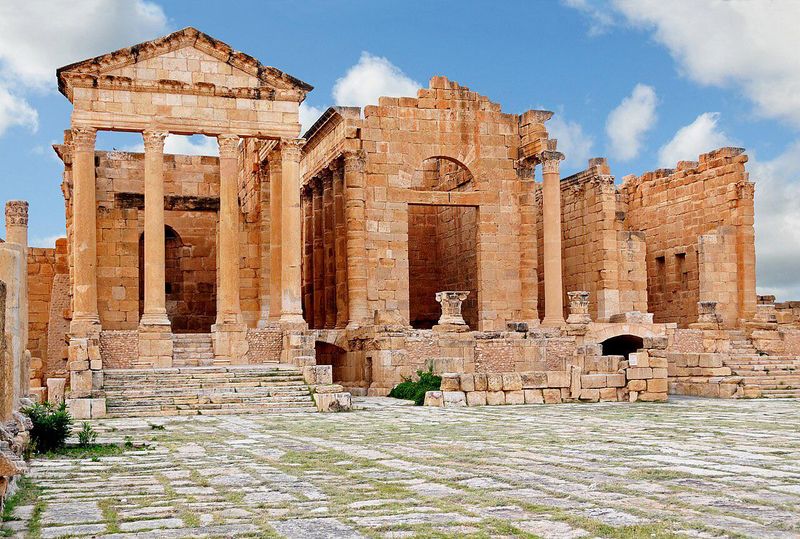
The ancient city of Sbeitla, located in Tunisia, offers a glimpse into Roman North Africa. Its well-preserved ruins, including temples and forums, reveal the architectural and cultural influence of Rome in this region.
As you explore the site, the blend of Roman and local elements becomes apparent, showcasing a city that thrived on trade and cultural exchange. The intricate mosaics and grand structures reflect the prosperity and sophistication of Sbeitla.
This site serves as a reminder of the far-reaching impact of the Roman Empire, highlighting the enduring connections between past and present cultural landscapes.
Herculaneum, Italy

Herculaneum, like Pompeii, was buried by the eruption of Mount Vesuvius. Unlike its more famous neighbor, Herculaneum offers a more intimate glimpse into Roman life.
Its well-preserved buildings, with vibrant frescoes and mosaics, reveal the everyday lives of its inhabitants. Walking through its streets, the sense of a living city frozen in time becomes palpable.
The preservation of wooden structures and organic materials provides unique insights into Roman domestic architecture. Herculaneum is a poignant reminder of nature’s power and a window into a world that vanished in an instant, yet still captivates modern explorers.
Ostia Antica, Italy
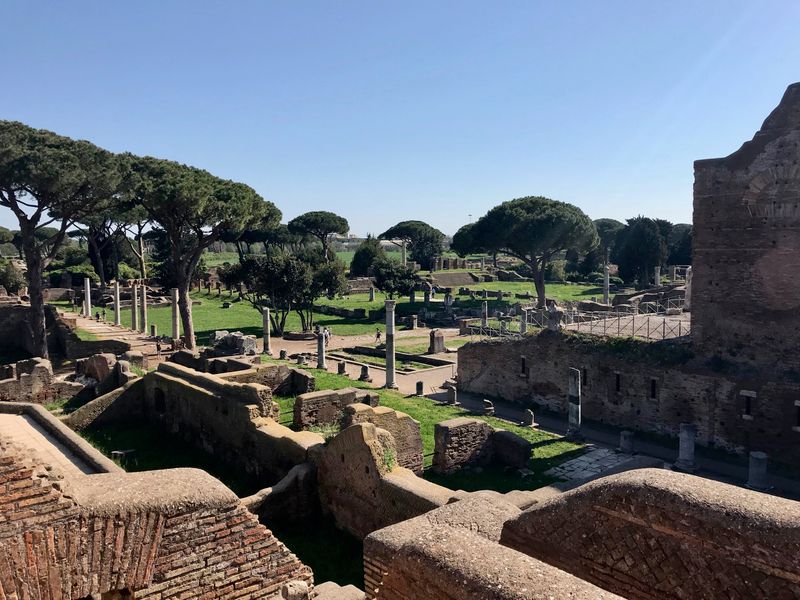
The ancient port city of Ostia Antica offers an extraordinary glimpse into Roman urban life. Its well-preserved streets, lined with houses, shops, and public buildings, reveal a bustling center of commerce and daily activity.
As you explore, the intricate mosaics and frescoes bring the past to life, illustrating the vibrant culture that once thrived here. Ostia’s significance as a trade hub is evident in its warehouses and docks, reflecting the empire’s economic reach.
It’s a site where history is tangible, inviting visitors to wander through its remnants and imagine the lives of those who once called this city home.
Aquincum, Hungary
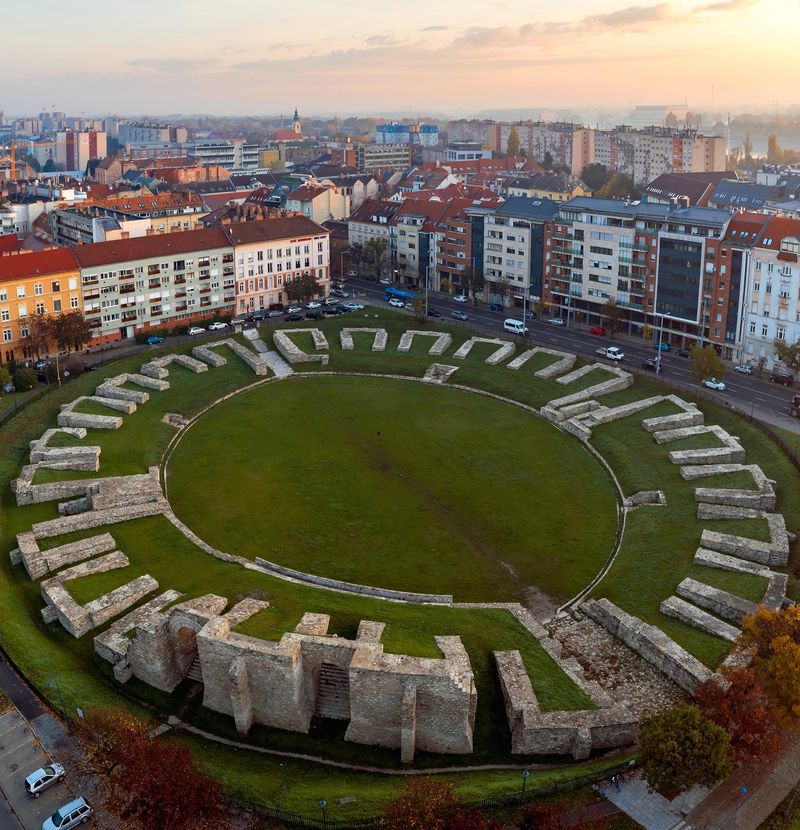
Aquincum, located in modern-day Budapest, was once a thriving Roman city. Its ruins, including baths, an amphitheater, and residential areas, offer a glimpse into the daily lives of its inhabitants.
As you wander through Aquincum, the sophisticated urban planning and architecture become evident. The city’s layout, with its orderly streets and public spaces, reflects the Romans’ ability to create functional and aesthetically pleasing environments.
Aquincum stands as a testament to the empire’s influence beyond its traditional borders, showcasing the cultural and architectural legacy that continues to shape the region’s identity.
Villa Romana del Casale, Sicily
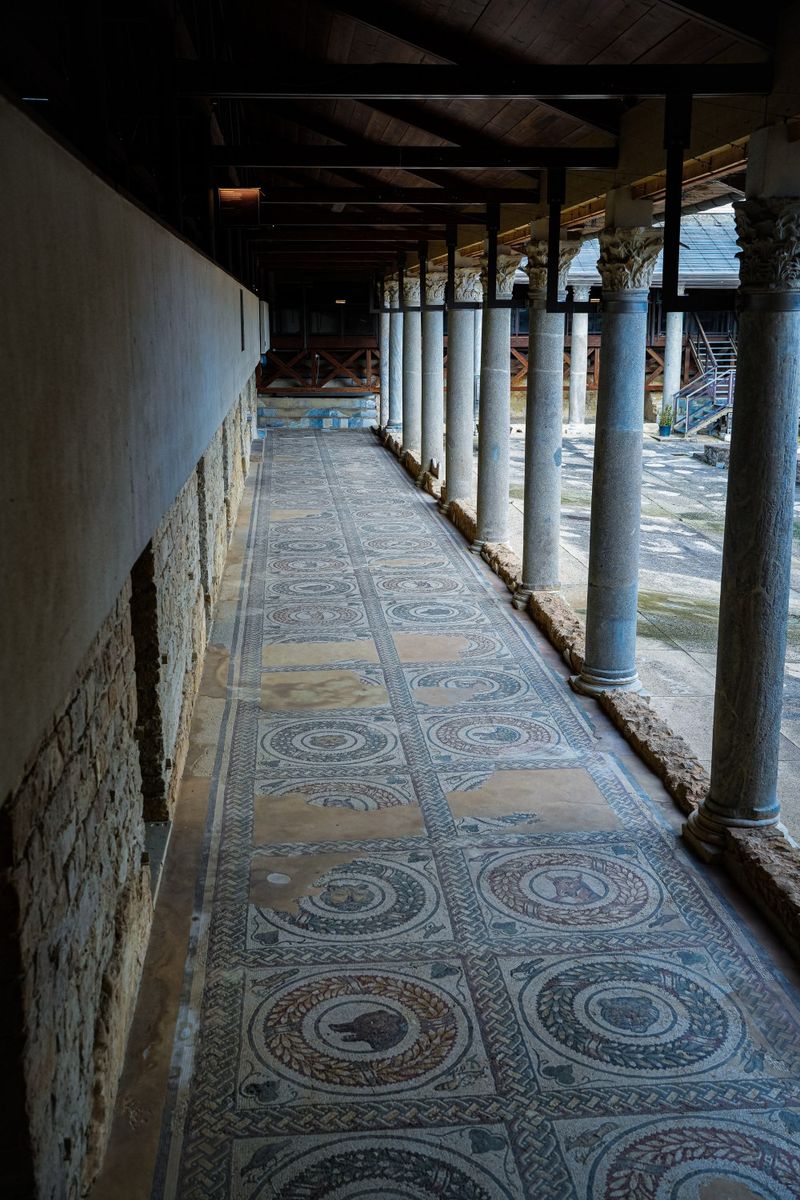
The Villa Romana del Casale in Sicily is renowned for its stunning mosaics, which are among the finest examples of Roman art. These vibrant artworks, depicting scenes from daily life and mythology, cover the floors of this luxurious villa.
As you explore the site, the intricacy and beauty of the mosaics become apparent, reflecting the wealth and sophistication of its owners. The villa itself, with its grand layout and architectural features, offers insights into the lavish lifestyles of Rome’s elite.
It’s a place where art and history converge, providing a window into the opulence of ancient Rome.
Volubilis, Morocco
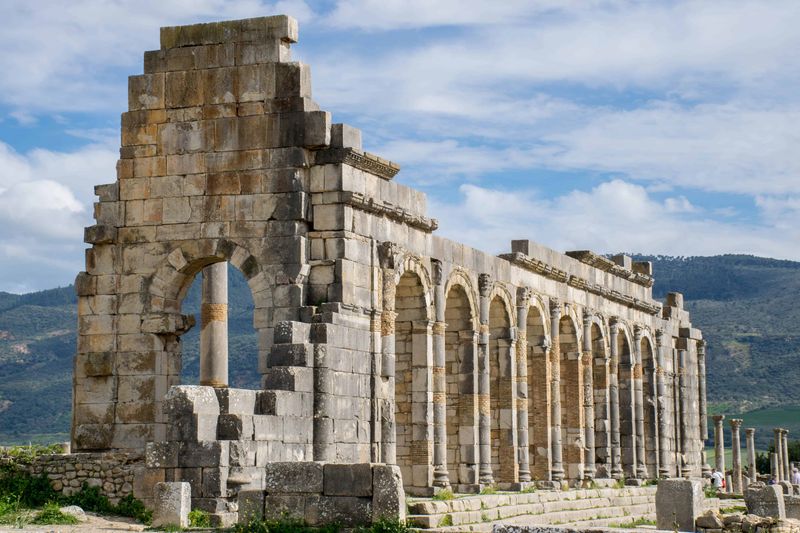
Volubilis, nestled in the fertile lands of Morocco, stands as a testament to Roman expansion into North Africa. Its ruins, including basilicas, triumphal arches, and intricate mosaics, reflect a city that thrived on agriculture and trade.
As you walk among the remnants, the fusion of Roman and local cultures becomes evident, showcasing a vibrant community that was an integral part of the empire. The surrounding olive groves and rolling hills provide a picturesque backdrop, highlighting the Romans’ connection to the land.
Volubilis is a place where history comes alive, offering insights into a diverse and dynamic past.
Arles Amphitheatre, France
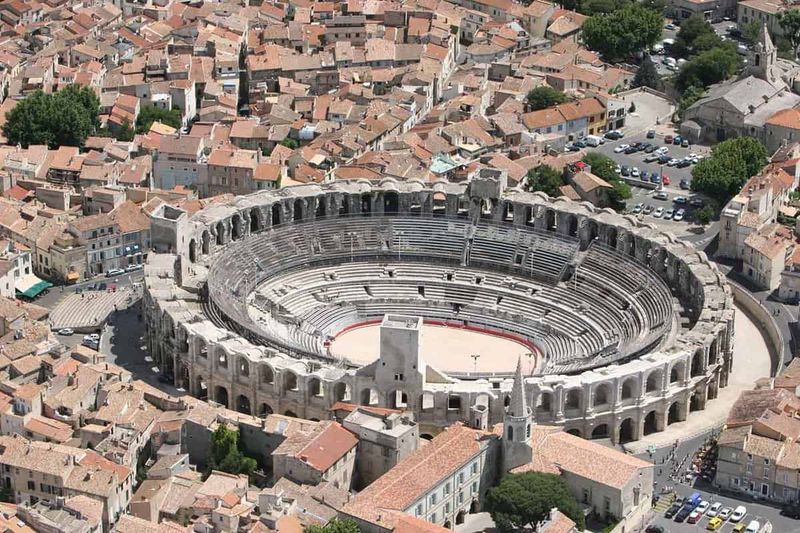
The Arles Amphitheatre in France is a remarkable example of Roman entertainment architecture. This well-preserved structure, still in use today, hosts concerts and events, blending ancient history with contemporary culture.
As you sit among the stone seats, the echoes of gladiator games and public spectacles become tangible. The amphitheater’s design, with its grand arches and tiered seating, reflects the Romans’ understanding of acoustics and crowd management.
Arles stands as a testament to the enduring appeal of Roman engineering and its ability to adapt to modern needs. It’s a place where past and present coexist, inviting exploration and reflection.
Perge, Turkey
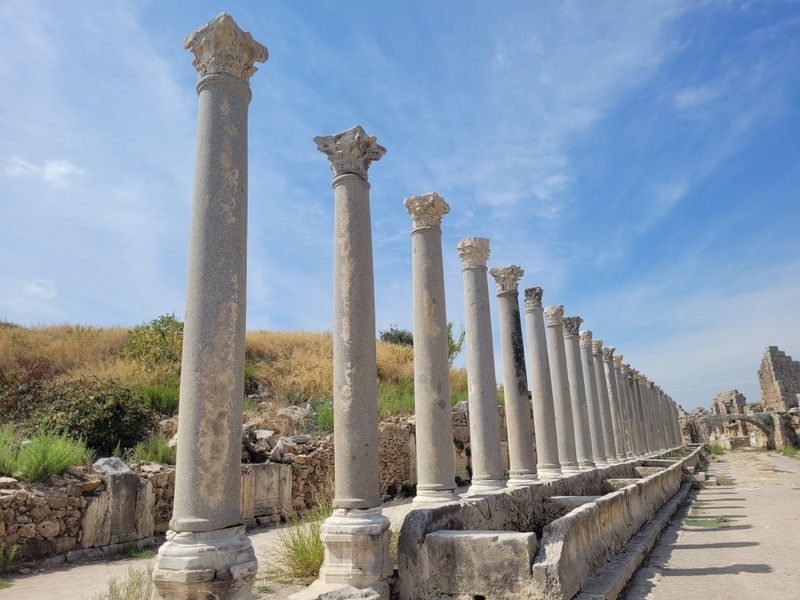
Perge, an ancient city in Turkey, is a treasure trove of Roman architecture and culture. Its colonnaded streets, theaters, and temples reveal a city that was both a cultural and commercial hub.
As you explore the well-preserved ruins, the grandeur of Roman urban planning becomes evident. The intricate carvings and mosaics speak to the artistic achievements of the time, reflecting a society that valued beauty and innovation.
Perge’s strategic location and thriving community highlight the empire’s influence in the region. It’s a place where history and culture converge, offering a unique window into the Roman world.
Aspendos Theatre, Turkey
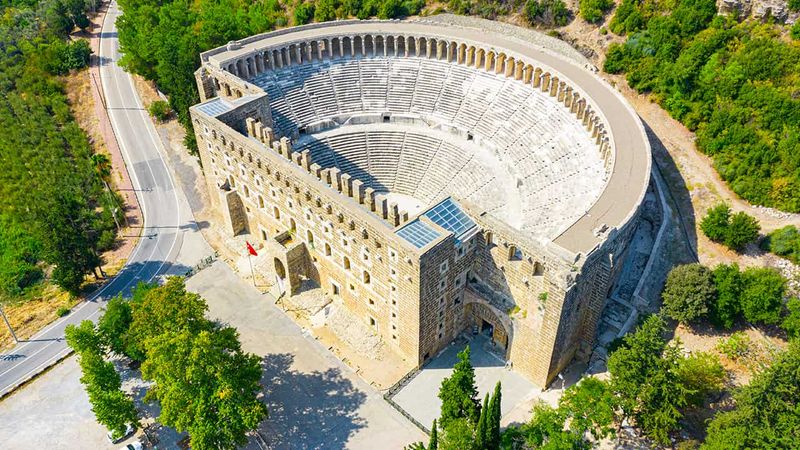
The Aspendos Theatre in Turkey is one of the best-preserved Roman theaters in the world. Its impressive acoustics and architectural design continue to host performances, bridging the gap between ancient and modern entertainment.
As you stand on its stage, the grandeur of Roman engineering becomes apparent, with every seat offering a perfect view. The theater’s backdrop of mountains adds to its picturesque setting, enhancing the experience of visiting this ancient site.
Aspendos is a shining example of Roman cultural influence, showcasing the empire’s dedication to the arts and its lasting impact on performance spaces.
Nîmes Arena, France
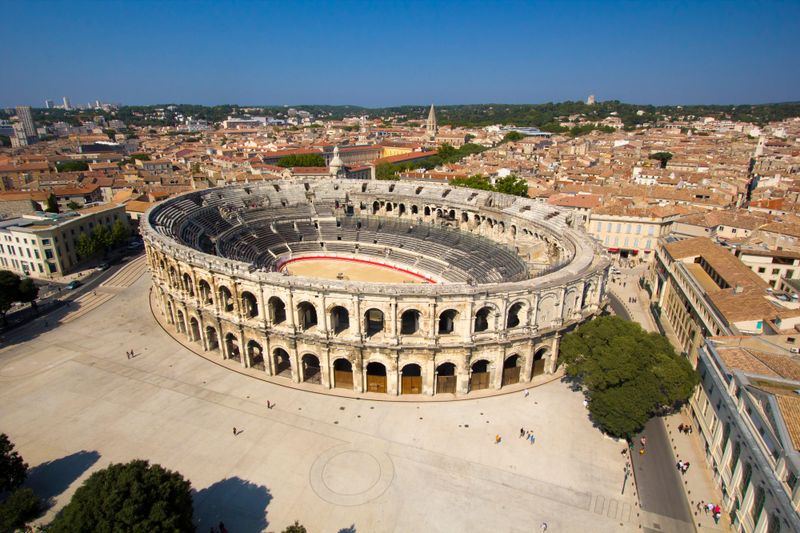
The Nîmes Arena is a testament to the grandeur of Roman amphitheaters. Still in use today for concerts and events, it exemplifies the enduring appeal of Roman design.
Its elliptical structure, with towering arches and tiered seating, offers a glimpse into the past where gladiator games once entertained crowds. As you walk through its corridors, the echoes of history are palpable, reflecting the Romans’ understanding of architecture and audience engagement.
The arena’s integration into the modern cityscape highlights its lasting cultural significance, making it a must-visit for those seeking to experience the grandeur of ancient Rome.
The Forgotten Roman Lighthouse at Dover
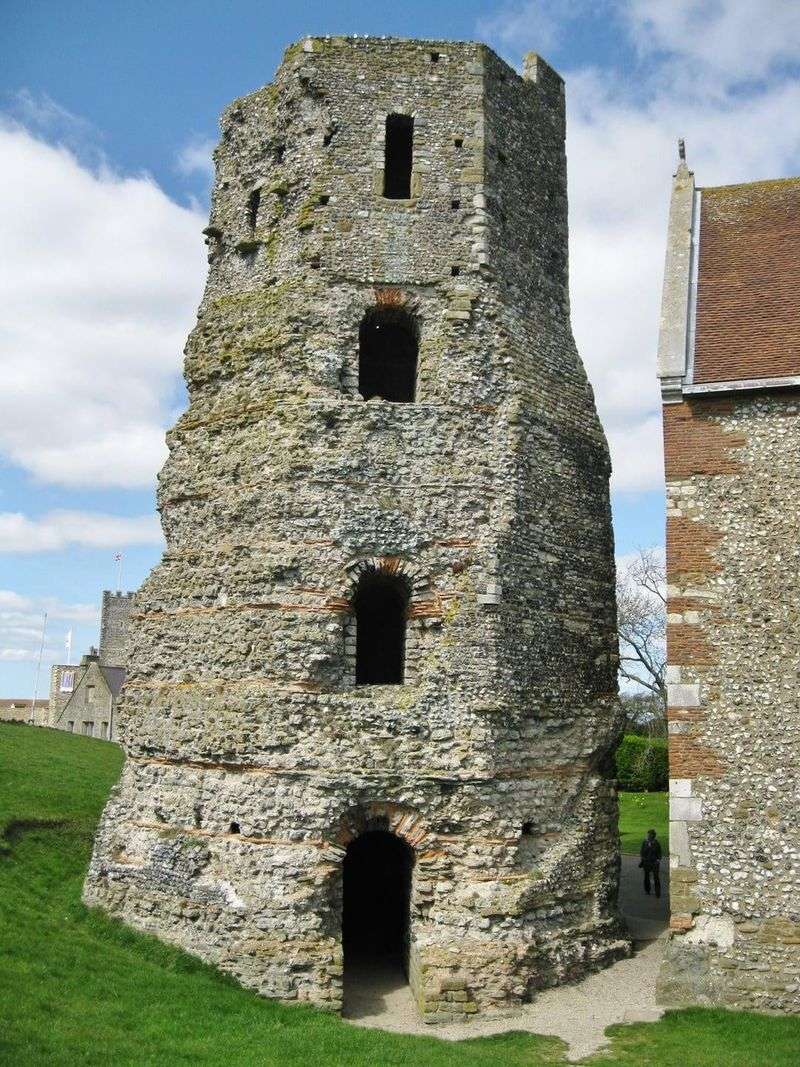
Perched on the iconic White Cliffs of Dover, the Roman Lighthouse remains a testament to ancient ingenuity. Built nearly 2000 years ago, this structure once guided Roman ships safely to shore.
Despite the weathered stones, its silhouette stands strong against the backdrop of the sea.
Visitors can climb up close, feeling the rough-hewn surface and imagining the bustling activity it once oversaw. It’s a lesser-known treasure, overshadowed by Dover Castle but equally significant.
Today, it offers a serene spot to ponder history while enjoying breathtaking views of the English Channel.
